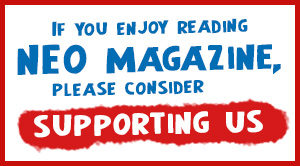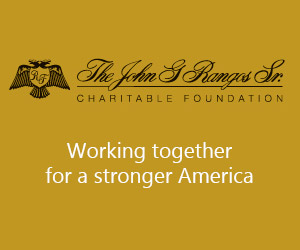- The Brothers Gerazounis: Engineering the Lifeblood of Buildings
- The Hellenic Initiative Summer Youth Academy Empowers Underprivileged Children Through Sports
- CAPTAIN MARIANTHI KASDAGLI: Charting her own course at sea
- Oscar nominee Lorraine Bracco of ‘Goodfellas’ is having ‘More Fun’ than ever before
- Voice And Vision: Grigoris Maninakis, 50 Years Of Greek Music In America
Kehila Kedosha Janina and a Chat with Marcia!

Alexander Billinis
Russel Shorto, a premier historian of New York, calls Manhattan the “Island at the Center of the World.” So, it is, and there are few pleasures like walking the avenues of Manhattan. So much American (and world history) has passed through this island, people from all over called the streets and avenues of this extraordinary piece of real estate home. On a rainy wintry day, my son and I walked the streets of Manhattan, downtown, towards lower Manhattan. I reminded him that these side streets were teeming with so many immigrants from Europe, including plenty of Greeks and Jews. Our destination was a particular house of worship, one for people who are Greeks AND Jews.
With sheets of rain tyrannizing us, we crossed Delancey Street, which immediately brought to mind the movie of the same name. I thought of the society the movie describes, and the outsized role the Jews have played in popular culture. I also saw signs for the Tenement Museum—an Israeli professor at Clemson said it was a must-see. He remarked on the museum tour guide who played a Greek Jew. Some other time . . . .
Our destination was Kehila Kedosha Janina Synagogue. In a city full of synagogues and a Jewish tradition of global dispersion, this particular house of worship is unique. As we rang the doorbell, the plaque inscription provides an immediate frame of reference—it is the only Romaniot synagogue in the Western Hemisphere.

Kehila Kedosha Museum Director Marcia Haddad Ikonomopoulos in the Yanina Synagogue. Photo by Brad Horrigan
“The House of Israel has many rooms,” my dear friend Tom Lambros Bornstein is fond of saying. Tom, of a Greek Christian mother and an Ashkenazi Jewish father, is well versed in the diversity of the Jewish mosaic, and he put me in touch with the doyenne of this unique community. As their name hints, the Romaniotes are Romioi, they are Byzantine Jews with roots in Greece that are even older than the Christian Era. Their language was Greek, and with over two millennia of roots in Greece they could hardly be more “of Greece.” While the Orthodox-Jewish cleavage in Greece, during the Ottoman Era, and Byzantium was real, there was no question that these Romaniot communities were very much part of the fabric of society and they had culturally distinct communities in much of Greece and Asia Minor. Even though most Jews in Greece and the rest of the Balkans today are of Sephardic background—a legacy of the Ottoman Empire’s welcoming of Jews expelled from Spain—the Romaniotes cling stubbornly to their unique Hellenic Jewish identity.
The Synagogue door opens. Marcia Ikonomopoulos welcomes us in from the elements.
I was glad my son was there, he helped record the conversation and take notes. It was important for me that he understood the complexity of the Greek narrative. While the Torah Scrolls and sacred architecture were different from our Greek narrative—and a great learning experience—the faces in the museum in the Upper (Women’s) Gallery were all too familiar. So, too, were the dreams. The dream of being American while not forgetting one’s origins.
Marcia is very, very New York, very Greek, very Jewish. The accent, the expressions, the sense of irony, and the quick switching from Greek to English all pointed to a woman rooted in this place, and in all aspects of her identity. She has that directness combined with “heart-of-goldness” which is one of the New Yorkers’ best traits. She came into Manhattan for this meeting (and to hear my Shipping Presentation at the EMBCA Panel later in the evening) from her home in Long Island. Having lived in Chicago, I was familiar with the stress and fatigue of cross-metro commutes. Her phone rings, it is a group from the Tenement Museum which invited themselves over to see the Synagogue. She cannot resist agreeing, and then puts down her I-Phone, which has a Greek flag phone case, “Yeah, I’m not Greek, right?” she says in her best New Yorkeese.

Janina Synagogue in New York
The Congregation was founded in 1928, by Greek Jews primarily from the city of Yannina (hence the Synagogue’s name). Then as now, most American Jewry were Ashkenazi Jews whose spoken language was Yiddish (a form of German with many Slavic and Hebrew words). They hailed from Germany and Northeastern Europe and many American Jews had become Americanized and assimilated. Balkan and Turkish Jews were primarily Sephardic, speaking the medieval Ladino Spanish of their expelled Iberian ancestors, and these Greek speaking Jews were yet another subgroup of Balkan Jews. “They were different, wearing turbans, not speaking Yiddish,” she mentions, and there was a fair amount of inter-faith discrimination.
The Greek Jews were an even smaller group, neither Sephardic nor Ashkenazi, clinging to a cultural and linguistic identity that they shared not with their fellow Jews, but with their fellow Greeks. “The children would go to Greek school—at the Greek Orthodox Church,” yet there too their Judaism set them apart from their fellow Greeks, where Orthodoxy plays a fundamental role in most Greeks’ identity, particularly in the Diaspora.
To suggest that Marcia and her fellow congregants at Kehila Kedosha Janina are not Greek is a sure way to set them off. They will quickly remind you of their loyalty to Greece, and any student of Greece’s heroic World War Two record will know of Mordecai Frizis, the first Greek officer to lay down his life for his country, was from the Romaniote Jewish community.
Marcia is well traveled, leading tours to Jewish sites throughout the Balkans and the Eastern Mediterranean, and our conversation is peppered with reminders of Jewish-Greece symbioses over the millennia. The most obvious is the term synagogue, which is Greek for gathering place, but there are others. The rabbi speaks from the Bima, which is Greek for tribune, news or delivery—think of the Athens daily newspaper “To Vima (Το Βημα).” Beyond these linguistic artifacts, there is Christianity itself, fusing Jewish and Greek traditions and culture, and Roman institutions. In a very real sense not only is this synagogue a window into the identity of our fellow Greeks of the Jewish faith, it is a window into our own Christian past.
The synagogue today operates with a congregation largely suburban, and as the names of the benefactors lining the wall attest, they are heavily intermarried with Ashkenazi and Sephardic Jews, as well as Americans of other faiths. They do, however, keep their reference point as a unique “room” in the House of Israel, and as can be expected from a Greek Community in the Diaspora, they have an annual “Greek Jewish Festival” in May that closes off their narrow street, and provides a window into their unique yet familiar culture. Also in proper Greek fashion, the food is legendary.
For us, it was important to find these Greek roots in lower Manhattan, and to celebrate the mosaic of being Greek, and being American. Find your way to Kehila Kedosha Janina when visiting New York. You will find part of your narrative, and if Marcia is there, a warm and hospitable narrator.











0 comments